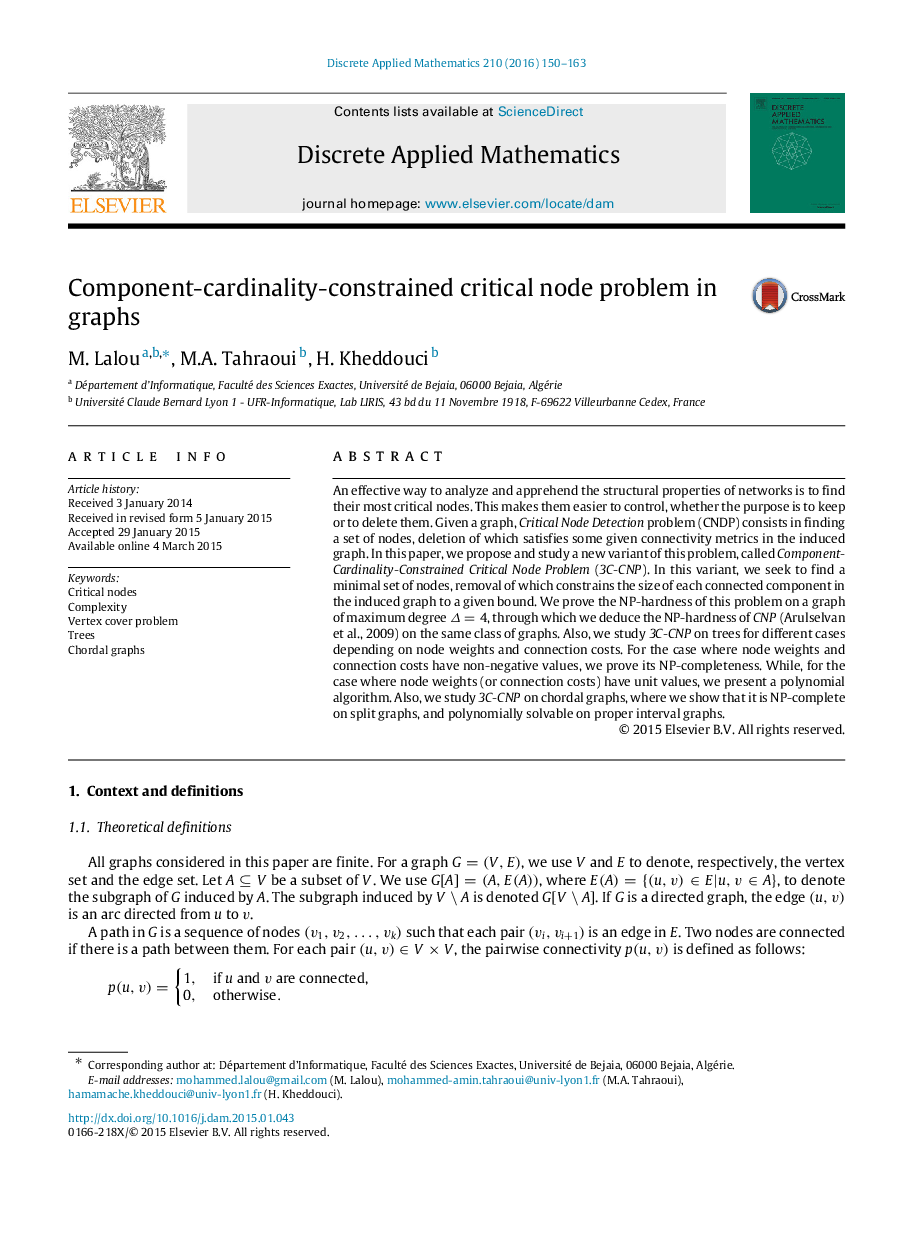| Article ID | Journal | Published Year | Pages | File Type |
|---|---|---|---|---|
| 419211 | Discrete Applied Mathematics | 2016 | 14 Pages |
An effective way to analyze and apprehend the structural properties of networks is to find their most critical nodes. This makes them easier to control, whether the purpose is to keep or to delete them. Given a graph, Critical Node Detection problem (CNDP) consists in finding a set of nodes, deletion of which satisfies some given connectivity metrics in the induced graph. In this paper, we propose and study a new variant of this problem, called Component-Cardinality-Constrained Critical Node Problem (3C-CNP ). In this variant, we seek to find a minimal set of nodes, removal of which constrains the size of each connected component in the induced graph to a given bound. We prove the NP-hardness of this problem on a graph of maximum degree Δ=4Δ=4, through which we deduce the NP-hardness of CNP (Arulselvan et al., 2009) on the same class of graphs. Also, we study 3C-CNP on trees for different cases depending on node weights and connection costs. For the case where node weights and connection costs have non-negative values, we prove its NP-completeness. While, for the case where node weights (or connection costs) have unit values, we present a polynomial algorithm. Also, we study 3C-CNP on chordal graphs, where we show that it is NP-complete on split graphs, and polynomially solvable on proper interval graphs.
